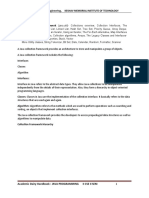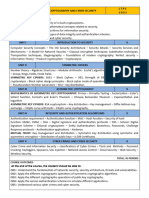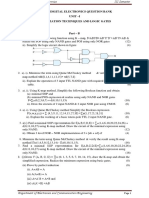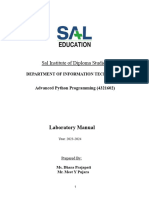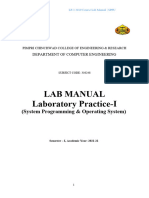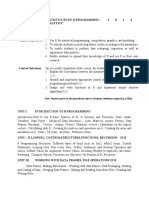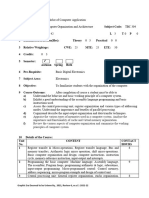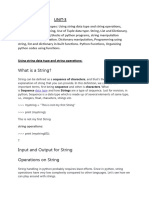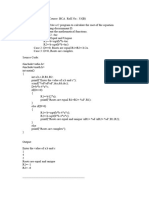0% found this document useful (0 votes)
326 views5 pagesPps Lab Manual Programs
The document describes an assignment on string operations in Python. It includes the aim to study various string operations, a problem statement to write a program accepting a string and performing length calculation, reversal, equality check, palindrome check, and substring check. The theory section explains how to create strings, index and slice strings, and the various string operations. It provides code examples to calculate string length, reverse a string, check equality of two strings, check if a string is a palindrome, and check for a substring. The conclusion is that students are able to successfully implement the string operations.
Uploaded by
Anusia SharmaCopyright
© © All Rights Reserved
We take content rights seriously. If you suspect this is your content, claim it here.
Available Formats
Download as DOCX, PDF, TXT or read online on Scribd
0% found this document useful (0 votes)
326 views5 pagesPps Lab Manual Programs
The document describes an assignment on string operations in Python. It includes the aim to study various string operations, a problem statement to write a program accepting a string and performing length calculation, reversal, equality check, palindrome check, and substring check. The theory section explains how to create strings, index and slice strings, and the various string operations. It provides code examples to calculate string length, reverse a string, check equality of two strings, check if a string is a palindrome, and check for a substring. The conclusion is that students are able to successfully implement the string operations.
Uploaded by
Anusia SharmaCopyright
© © All Rights Reserved
We take content rights seriously. If you suspect this is your content, claim it here.
Available Formats
Download as DOCX, PDF, TXT or read online on Scribd
/ 5




